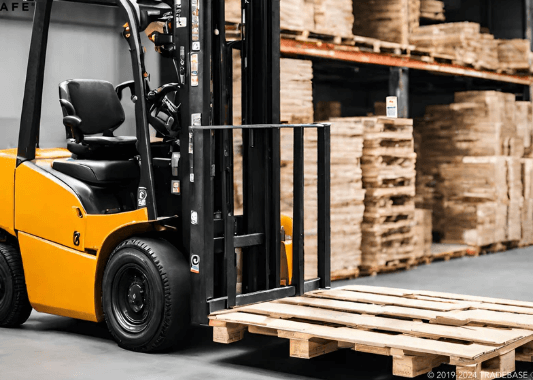Pallet Loading for Different Industries: Tailored Strategies

Pallet loading is a critical aspect of supply chain management that significantly influences efficiency and cost-effectiveness across various industries. As businesses strive for optimal logistics and transportation solutions, understanding the unique needs and challenges of different sectors becomes essential. This article explores tailored strategies for pallet loading that cater to the specific demands of various industries, ensuring effective storage, transportation, and handling of goods.
The Importance of Efficient Pallet Loading
In any industry, the way products are loaded onto pallets can impact overall operational efficiency. Proper pallet loading minimizes damage during transit, maximizes space utilization, and reduces handling time. Effective palletization is a key factor in enhancing both storage and transportation efficiency. However, each sector has distinct requirements that influence how products should be loaded. For example, the food industry has strict hygiene standards and regulations, while the automotive industry may require specialized loading techniques to accommodate heavy machinery and parts. Recognizing these differences is the first step toward developing effective loading strategies.
See also: What role does technology play in education reform in the USA?
Retail: Prioritizing Speed and Accessibility
In the retail sector, quick turnaround times are vital. Products need to be loaded onto pallets in a way that allows for easy access and swift unloading at distribution centers or stores. Retailers often use a “first in, first out” (FIFO) method, ensuring that older stock is sold before newer items. Pallet loading strategies here may include using smaller pallets for easy handling and optimizing the arrangement of goods to facilitate rapid restocking. Utilizing clear labeling and efficient stacking techniques can also enhance visibility and accessibility for workers.
Food and Beverage: Ensuring Safety and Compliance
The food and beverage industry has unique challenges when it comes to pallet loading. Safety and hygiene are paramount, as improper loading can lead to contamination or spoilage. In this sector, it’s crucial to maintain proper temperature control and ventilation during transit. Strategies may include using pallets designed for easy cleaning, ensuring that food items are stored securely and preventing cross-contamination by separating raw materials from finished products. Implementing strict loading protocols and conducting regular training for employees can further enhance safety and compliance in this industry.
Pharmaceuticals: Emphasizing Security and Stability
The pharmaceutical industry requires a different approach to pallet loading due to the sensitive nature of the products involved. Medications often have specific storage requirements, such as temperature control and protection from light. Therefore, strategies for loading pallets in this sector must focus on stability and security. Utilizing dedicated pallets that provide adequate support for fragile items, along with secure shrink-wrapping techniques, can help prevent damage during transportation. Additionally, tracking systems and barcode scanning can enhance inventory management and ensure compliance with regulations.
Automotive: Handling Heavy Loads with Precision
In the automotive industry, pallet loading must account for the weight and size of components, such as engines and transmissions. It’s essential to utilize sturdy pallets that can withstand the heavy loads. Moreover, careful consideration of weight distribution is crucial to maintain balance and prevent accidents during handling. Implementing specific loading techniques, such as using tiered stacking or modular pallet systems, can optimize space and improve stability. Collaboration with suppliers and logistics partners is also vital to ensure that all components are loaded efficiently and securely.
Construction: Adapting to Diverse Materials
The construction industry presents unique pallet loading challenges, given the variety of materials involved, from lumber to concrete blocks. Each type of material may require different loading strategies to ensure safety and efficiency. For example, heavy items should be placed on the bottom of the pallet, while lighter materials can be stacked on top. Additionally, using pallets that can be easily maneuvered on-site is essential, as construction environments can be unpredictable. Training workers on proper loading techniques and the importance of securing loads can help minimize risks associated with transporting construction materials.
Customizing Strategies for Success
Effective pallet loading is a vital component of supply chain management across various industries. By tailoring strategies to meet the unique needs of each sector, businesses can enhance efficiency, reduce costs, and ensure the safe transportation of goods. Whether in retail, food and beverage, pharmaceuticals, automotive, or construction, understanding the specific requirements and challenges of pallet loading can lead to improved operational performance. As industries continue to evolve, embracing innovative pallet loading techniques will be crucial for maintaining a competitive edge in today’s fast-paced market. By focusing on customized solutions, businesses can optimize their logistics processes and contribute to overall success.




